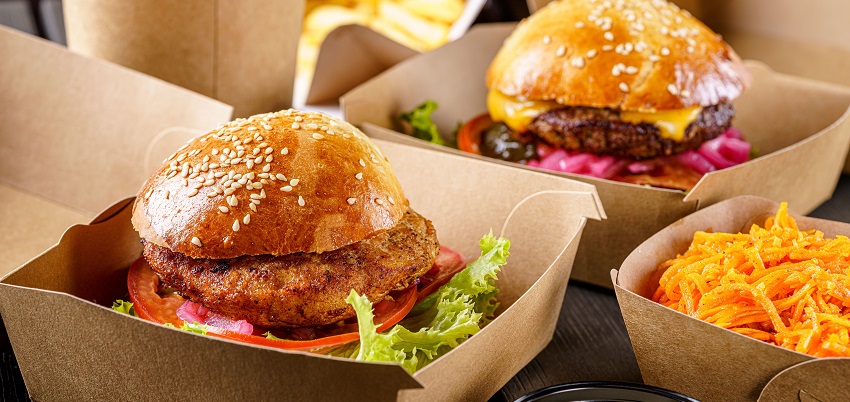PFAS and food packaging: Learn about 'Forever Chemicals'

PFAS is a large, diverse group of human-made chemicals used in various applications, including fire-fighting foams, medical devices, nonstick cookware and food packaging.
Eleven states have enacted laws that ban PFAS, or “forever chemicals,” in food packaging in response to concerns about potential health risks. Another seven states have proposed similar bans—and more states are expected to follow.
A recent Restaurant Law Center webinar explores what restaurant operators need to know about per- and polyfluoroalkyl substances (PFAS) in food packaging. The webinar, “Outlook on PFAS in 2023,” is available to watch on demand. It features a panel of experts from the international law firm Steptoe. Laura Abshire, director of Food and Sustainability Policy for the National Restaurant Association, moderates.
PFAS is a large, diverse group of human-made chemicals used in various applications, including fire-fighting foams, medical devices, water- and stain-resistant textiles, nonstick cookware and food packaging. They are termed “forever chemicals” because they are slow to degrade. PFAS “have been shown to be persistent in the environment and also persistent or bio-accumulative in the body,” explains chemistry specialist Jessica Cooper of Steptoe during the webinar. “Some PFAS have been linked to certain [adverse] health effects.”
The U.S. Food and Drug Administration (FDA) regulates PFAS in the same manner as any other food contact substance and conducts a safety assessment based on the specific chemical and use, Cooper explains. In the early 2000s, scientific studies raised concerns about certain long-chain PFAS used in food packaging. The products containing these long-chain PFAS were voluntarily removed from market; the FDA revoked authorization for these chemicals; and they are no longer listed in the Code of Federal Regulations. Then, in spring 2020, the FDA completed a post-market scientific review that raised questions about potential human health risks due to a subset of short-chain PFAS. In response, manufacturers voluntarily agreed to phase out the sale of food contact substances with these specific PFAS, which have been used for grease-proofing paper and paperboard, including some burger wrappers, to-go containers and pizza boxes.
This phaseout applies only to specific chemicals, not to PFAS as a class, which is comprised of thousands of chemicals. In contrast, several states are now regulating PFAS as a class in many uses, including food packaging. As of January 2023, PFAS bans are in effect in California and New York. By January 2024, bans will take effect in an additional seven states—Washington, Vermont, Connecticut, Colorado, Maryland, Minnesota and Rhode Island. Hawaii’s ban takes effect in December 2024, and Maine’s in January 2030. These bans apply only to PFAS intentionally added to products.
The specifics of the PFAS bans differ per state. “Some of the state laws are going to apply to suppliers and distributors of food packaging, but maybe not to the restaurants themselves, whereas some of the laws will [apply also to restaurants],” says Joan Baughan, a partner with the Steptoe, who details some state-by-state nuances in the webinar. Check with your attorney for specific guidance on your state’s legislation. Failure to comply could result in heavy fines and lawsuits.
Most states have a broad definition of “food packaging,” which may include straws and eating utensils, in addition to disposable bowls, food wrappers, takeout containers and other packaging. To ensure food packaging meets your state’s requirements, “consider asking for a certificate of compliance from your suppliers,” recommends Baughan, who specializes in food and drug law. “If your supplier can't provide that kind of a statement, you probably want to look elsewhere.” Obtaining a certificate of compliance can help shield you from liability in some states, Baughan notes.
Given the increased attention on PFAS, some businesses have begun conducting self-audits. Companies are looking at what they’re using, how they’re using it, checking the material safety data sheets or product information supplied to them by their suppliers. They’re doing a top to bottom review to determine whether in fact this is something that they should address, according to Bob Shuftan, a Steptoe partner, who serves as lead trial counsel on PFAS litigation.
“To the extent that audit programs are initiated and conducted either in anticipation of litigation or otherwise under an attorney work product privilege, they should be handled and documented consistent with that purpose,” he adds.
As state regulations take effect, expect manufacturers to introduce more food packaging choices that meet the requirements, says Baughan. “There are lots of packaging materials out there now that don't contain PFAS, but for those that do, like some of these grease-proofing agents that are on paper packaging, for example, it will take time for alternatives to be identified.”